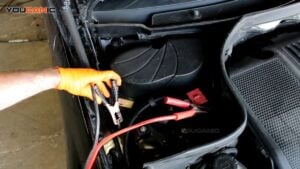Mercedes-Benz Air Suspension Malfunction + ⬆️ Up Arrow
The air suspension system in your Mercedes-Benz vehicle is not functioning correctly. This can manifest as the vehicle being stuck in a raised position or a stiff or bouncy ride. The car symbol with an upward arrow on the dashboard indicates a malfunction within the airmatic suspension system. Without the proper diagnostic tools, it can be challenging to determine the specific cause of the problem.
In some cases, the issue may be easy to identify, such as leaks in the air struts or broken hoses, as they can be heard as a hissing sound. However, in other cases, the problem may not be as obvious, and the vehicle may still be able to drive normally. Common causes of air suspension failure include a malfunctioning air compressor, blown fuses, or bad relays. To accurately diagnose and repair the issue, it may be necessary to use specialized diagnostic equipment.
The most common reason the Mercedes-Benz malfunction light comes on along with the car symbol and ⇫ UP arrow is due to the failure of the air suspension compressor. The air suspension may be too weak to raise the car, the air release valve may get stuck, or the air suspension compressor may stop working completely:
List of reasons why Mercedes-Benz malfunction light, car symbol, and up arrow come on:
- Air suspension compressor – The compressor may work but doesn’t fill the reservoir fast enough.
- Valve block
- Leaking airline (white tube)
- Air release valve (mounted on the air compressor, may not release air)
- ADS valve faulty ( mounted at the body of each air strut).
- Wire harness. ( usually wires or connectors to the ADS valves)
- The Accelerator body sensor can also fail and cause the malfunctioning warning light. It’s a good idea to read all the codes.
- Level sensor failure
These problems can trigger the air suspension malfunction message and car with the up arrow. To find out which one is the problem, you will need to read the fault codes from the air suspension module.
Mercedes-Benz air suspension reset
To reset the air suspension on a Mercedes vehicle, you will need to follow these steps:
- Turn the ignition key to the “on” position but do not start the engine.
- Press and hold the “air suspension” button until the indicator light begins to flash.
- Release the button and wait for the indicator light to stop flashing.
- Press and hold the “air suspension” button again until the indicator light begins to flash.
- Release the button and wait for the indicator light to stop flashing.
- Turn the ignition key to the “off” position and remove the key.
- Wait for at least 15 minutes, then turn the ignition key back to the “on” position and start the engine.
- Press and release the “air suspension” button to ensure the system has been reset.
The above steps may vary depending on the specific model and may not work on all Mercedes-Benz vehicles.
Common Causes
Air Compressor
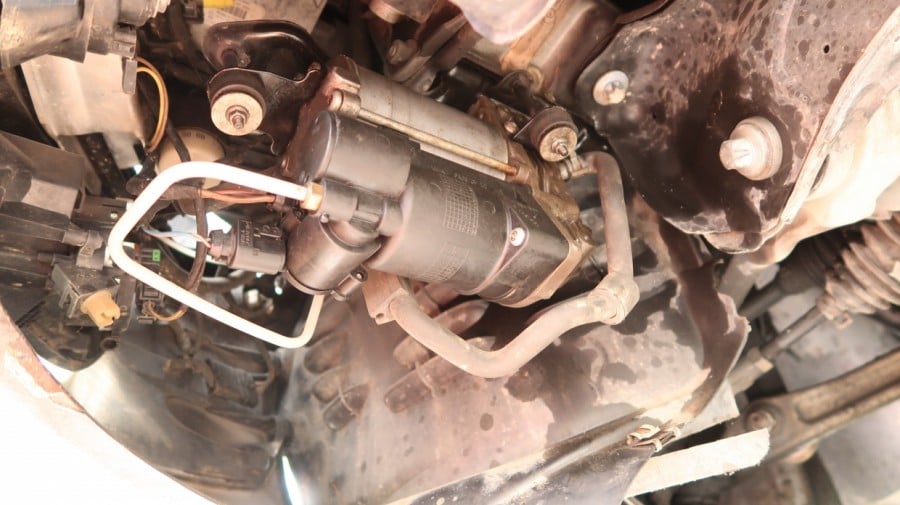
The heart of every AirMatic system is its compressor, which provides a steady flow of pressurized air. This is a simple device with only a few moving parts, similar to those used to inflate a flat tire. It has a cylinder with valves and a piston that goes up and down. The whole assembly is powered by an electric motor, which is one possible failure point.
When the air suspension compressor fails, you may get a fault code such as:
- Recovery time during the filing of the central reservoir is too long.
This code can be caused by a faulty air suspension compressor failure and a damaged airline or faulty valve block. The piston rings will wear out in most cases, preventing the compressor from generating enough pressure.
The air compressor may run and seem to work, but it takes too long to generate the required pressure, which means the compressor is too worn out and needs to be replaced.
Specialized repair kits help solve most of these issues if you want to save money and rebuild your worn-out air suspension compressor. Air suspension compressors are very inexpensive and easy to replace. Usually, it is not worth trying to rebuild an old unit.
ADS Valve
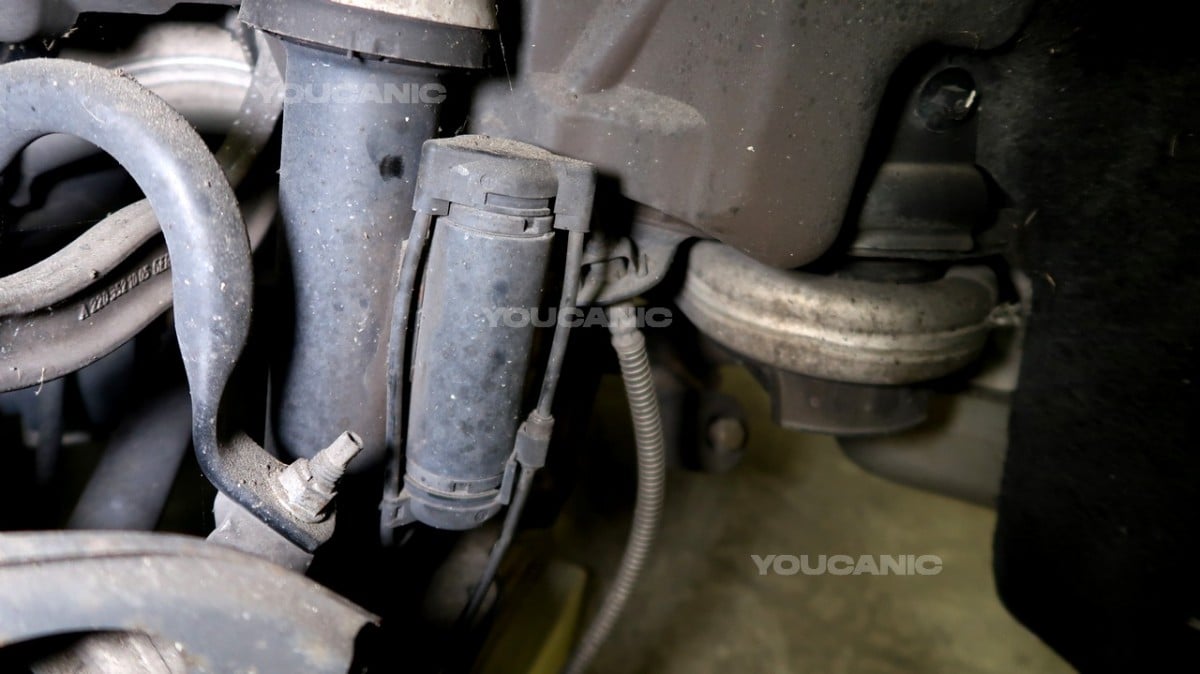
ADS stands for adaptive damping system. These valves change the suspension setting between SPORT and COMFORT or NORMAL. The ADS valves are mounted at the body of each air strut.
ADS valves can fail and trigger the airmatic malfunction with the up arrow. The car will most likely stay at its average height, but the ride becomes very bouncy once one ADS valve fails.
To fix this problem, you will need to read the codes to determine which ADS valve is faulty, as there are four. One at each air sturt. Then replace the faulty strut along with the ADS valve. The valve itself can not be replaced without replacing the air strut.
- Learn more about the Mercedes-Benz ADS suspension.
Damaged Suspension Airbag
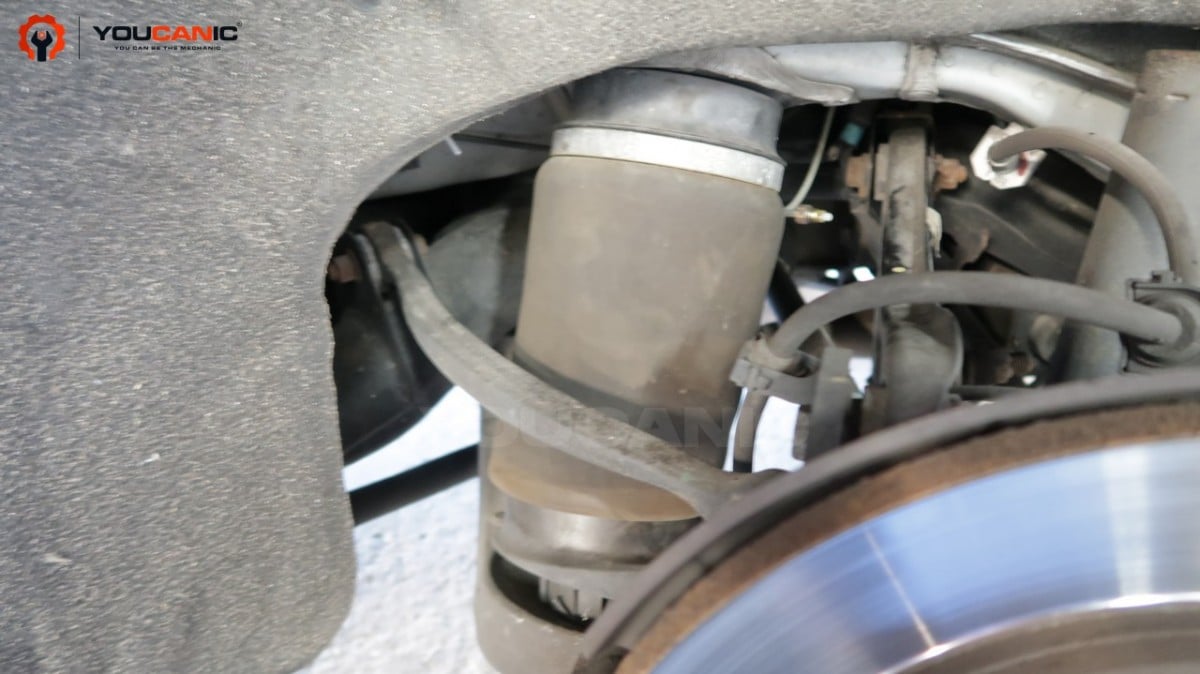
Air springs, on which the whole car sits instead of traditional steel coils, are nothing more than rubber bellows filled with compressed air. With time, they may become brittle or punctured by dirt buildups and rocks, causing them to leak.
Although the compressor can compensate for this loss to a certain degree, the amount of escaping air will eventually become too large, and the car will sag. But even before that happens, the vehicle might spot the leakage and alert the driver with this warning message. Some air springs come with shock absorbers as one assembly and must be replaced in pairs.
- Follow the guide on how to replace airmatic strut
Faulty valve-block unit
Every AirMatic system has a valve body, which acts as a junction box that directs the air coming from the compressor towards other components. These are pneumatic valves with electrically actuated solenoids that control the airflow.
With time, the O-rings inside the valve body may become brittle or cracked, causing an internal air leak. Other possible failures include defective pressure sensors and malfunctioning solenoids. In most cases, replacing the whole valve body is the only solution.
Severed or blocked airline
All AirMatic components are connected with a series of flexible airlines. As a result of aging or mechanical damage, these plastic hoses may crack or break, letting out the pressurized air.
Depending on where the leak appeared, this may affect just one corner of the car or the whole system.
In addition, the airflow through the hose may be obstructed if it gets jammed or folded during mechanical repairs. Finding the leak’s location can be difficult but repairing the line is usually relatively easy.
Defective Level Sensors
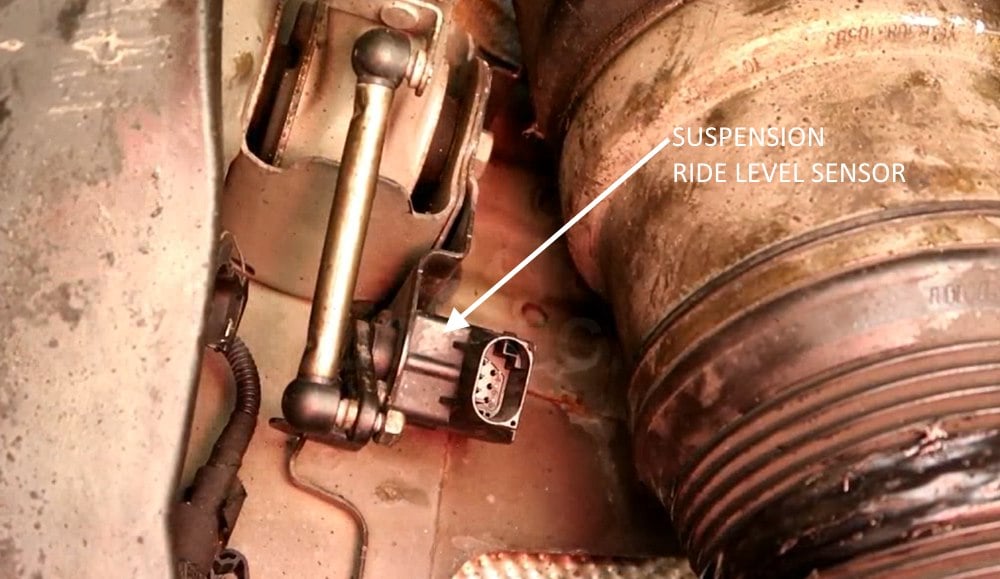
Each end of the vehicle has a sensor that measures the distance between the chassis and suspension. This data is used to determine if the car is leveled and adjust the pressure in each air spring accordingly.
As with any sensor, it can fail for several reasons, including internal electrical shorts and mechanical damage. Also, brackets and linking rods may bend out of shape, giving false readings. In addition, wiring leading up to the sensor and a corresponding connector may be cracked or loose.
Blown Fuse
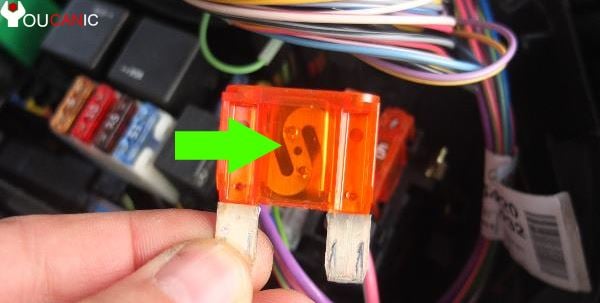
Like other electronic systems, AirMatic has several fuses, which protect it from electrical overloads or short circuits. If a fuse blows, it will shut down those wired components and trigger errors.
Checking for blown fuses is always a good starting point when multiple sudden failures occur.
There is a relay for the air suspension system that can fail. It is also recommended to replace the air suspension compressor relay when replacing the air suspension compressor relay.
AirMatic Control Unit

Lastly, the computer or the control device operating the AirMatic system may also malfunction.
Although this is not that common, it is still worth checking if everything else appears to be working fine. In some cases, the moisture may get into its housing, which causes corrosion and short circuits.
Tests and Diagnostics Tips
- Check the operation of the air suspension compressor. The compressor needs to generate a certain pressure within a specific time.
- Perform leakage test between valve block and central reservoir.
Troubleshooting
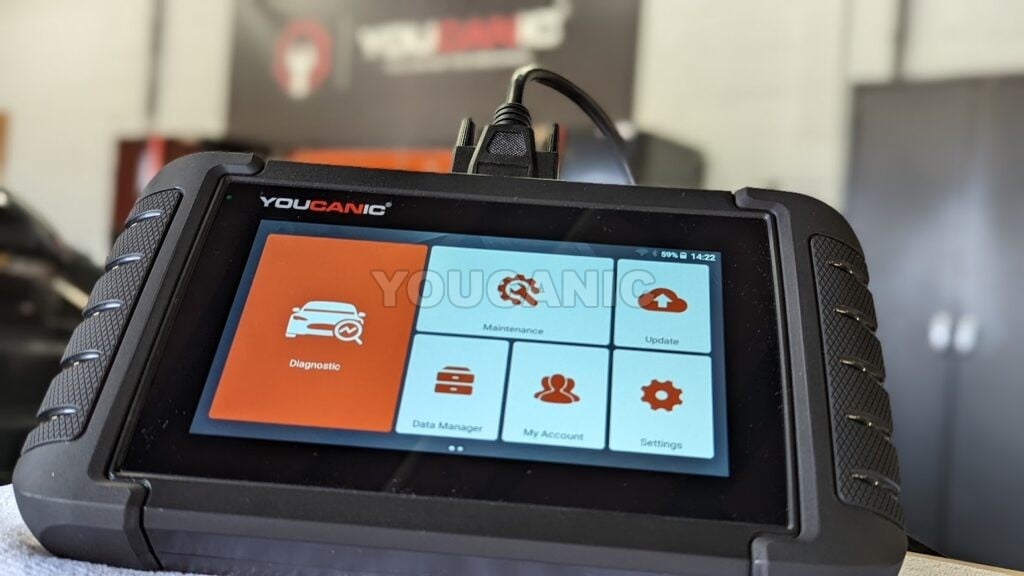
There are several potential causes of air suspension malfunction in a Mercedes-Benz vehicle, including:
- Leaks in the air suspension system: Over time, the airbags, airlines, and other components of the suspension system can develop leaks, which can cause the system to lose pressure and malfunction.
- Faulty compressor: The compressor pumps air into the airbags; if it fails, the suspension will not inflate properly.
- Worn-out air suspension struts: The air suspension struts can wear out over time, and if they are not replaced, they can cause the system to malfunction.
- Faulty air suspension control module: The control module is responsible for controlling the air suspension system; if it fails, the system will not function properly.
- Damaged leveling sensors: The leveling sensors are responsible for measuring the vehicle’s height; if they are damaged, the system will not be able to adjust the suspension to the correct height.
- Wiring issues: Damaged or corroded wiring can cause the system to malfunction
The ⬆️ Up Arrow sign on the dashboard shows that the vehicle’s air suspension system is in failure mode and is now using the emergency level mode. It’s important to have it checked by a professional as soon as possible.
Still, you should know that a simple OBD-II scanner will not help here, as these will not have access to the AirMatic control module. Instead, you will need a diagnostic scanner, such as the YOUCANIC Full System Scanner.
To learn more about how to find out why your Mercedes-Benz is showing suspension malfunction, follow this guide and read the codes from the AirMatic module.
Frequently Asked Questions
Can I drive with a broken AirMatic system?
If the air ride on your Mercedes-Benz is down, it will be sitting on its bump stops. Because these rubber blocks are flexible, you can still drive the car for a few miles, as long as the wheels are not rubbing against anything.
However, this affects the vehicle’s suspension geometry and ride quality, meaning you should avoid driving it for longer distances.
Do I need to reset the AirMatic system after the repair?
After determining what may be causing the issue, the next step is to replace the faulty compound. With that done, the vehicle’s air suspension will usually restore its function. But sometimes, even with that done, the AirMatic still may not work and display a fault message.
If that happens, erasing any stored codes may help. To do so, you will again need a diagnostic tool capable of accessing the Airmatic module.
Conclusion
A warning light with a car and an upward-facing arrow on the dashboard of your Mercedes-Benz is a tell-tale sign of an AirRide issue. This can be caused by a broken compressor, air start malfunctioning valve blocks, or defective sensors. In most cases, you will need a suitable diagnostic tool to track down the root of the problem.
We hope you find the Mercedes-Benz Malfunction + ⬆️ Up Arrow guide helpful. Check these troubleshooting and repair guides for more help on your Mercedes-Benz.







